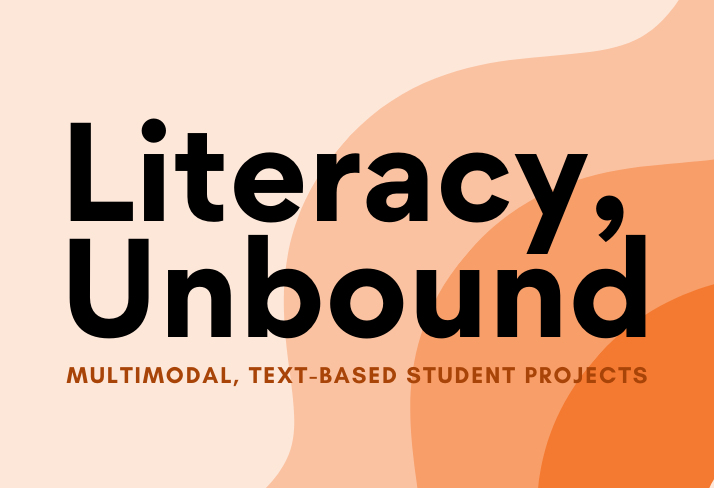|
Offer your students an opportunity to authentically engage with content, even when learning remotely.
Over the past year, school has been a rollercoaster event filled with openings, closings, virtual connections, and dramatic shifts in teaching and learning techniques and experiences. No matter the grade level or subject area, our learning spaces have been completely redefined. And it isn’t just due to in-person or online learning schedules — many teachers are finding that what worked in person may not be working as well online or in other virtual settings. Additionally, changes to state tests and other accountability measures have created opportunities for teachers to redesign their teaching methods and learning outcomes to authentically engage students in the core elements of their content areas.
Finding ways to engage students in content can be difficult, particularly when so much teaching and learning is happening remotely. We understand this challenge. Our Literacy Unbound team faced the same concerns about how to engage teachers and students in our 2020 Summer Institute — traditionally a 2-week, in-person immersive learning experience. Rooted in the belief that students learn best through authentic inquiry, curiosity, and through the multimodal embodiment of a text, Literacy Unbound brings teachers and students together with teaching artists to explore the in-depth themes of a shared text, independently. In a typical summer, we would develop a series of Invitations to Create as a way to invite and entice students into the world of the text. These invitations might prompt readers to journal, draw, collage, create a playlist, or explore some other form of expression related to a key quote or “hotspot” in the text. As readers collect their responses, they traditionally come together for a dynamic experience in which they construct an original performance based on their responses to the invitations. While much of the in-person institute needed a complete redesign to fit a virtual institute, the structure of Invitations to Create did not. Invitations provide the perfect setup for virtual reading, writing, and collaboration. And they come with plenty of choice, freedom, and personal exploration, which means that participants can be authentically engaged from the very beginning.
Creating your invitation
Even though Invitations to Create begin as prompts to pieces of literature, they’re extremely flexible and are a promising practice for all content areas and grade levels during remote and/or blended learning experiences. How can we begin to incorporate invitations into curriculum for math, science, and social studies, and beyond? To get a sneak peek of the process, we’ve developed the sample below to experiment with Invitations in Mathematics, adapted from A Guide to Crafting Invitations to Create by Dr. Nathan Allan Blom. Note: As you read, look for the examples in blue of building an invitation for A Mathematician’s Lament.
Step 1: Jot
Whatever the content, there are literacy expectations in your field. What are the reading and writing requirements in your field? In your course(s)? In the exam? Jot down some of your thinking as a warm-up. Step 2: Identify What is a text you go back to over and over again that you want to introduce to your students — or -- what is a text you already plan to use in a future lesson? Have the text handy.
A Mathematician’s Lament by Paul Lockhart
Step 3: Choose Choose a “hotspot” within the text. This is a passage of the text that captures your attention. Typically, it’s helpful if a hotspot contains:
Explain in a few words the context of the hotspot within the larger text.
In the first chapter, the author shares about a nightmare an artist has about how art is taught so that children don’t hold a paintbrush until they are young adults. Instead, they learn about art for years before they experience it for themselves. He says that life is very much like that in the real world of mathematics:
“Everyone knows that something is wrong. The politicians say, “We need higher standards.” The schools say, “We need more money and equipment.” Educators say one thing, and teachers say another. They are all wrong. The only people who understand what is going on are the ones most often blamed and least often heard: the students. They say, 'Math class is stupid and boring,' and they are right.” Step 4: Offer Offer an idea you had or a connection you made during your reading. Share with the voice of a fellow student, rather than an authority on the subject.
This makes me wonder how much more often math is seen as boring instead of beautiful.
Step 5: Connect Connect the hotspot to a piece of media to illustrate and/or extend your connections, questions, or ideas. Explore media to find something that connects and inspires you, like:
Video: The Beauty of Mathematics
Step 6: Prompt Create your prompt, using this structure: In whatever way seems best to you (equation, movement, experiment, poetry, prose, music, art, video, etc.), explore ______. Let's look at our invitation for A Mathematician’s Lament created from steps 1 - 6:
A Mathematician’s Lament by Paul Lockhart
In the first chapter, the author shares about a nightmare an artist has about how art is taught so that children don’t hold a paintbrush until they are young adults. Instead, they learn about art for years before they experience it for themselves. He says that life is very much like that in the real world of mathematics: “Everyone knows that something is wrong. The politicians say, “We need higher standards.” The schools say, “We need more money and equipment.” Educators say one thing, and teachers say another. They are all wrong. The only people who understand what is going on are the ones most often blamed and least often heard: the students. They say, 'Math class is stupid and boring,' and they are right.” This makes me wonder how much more often math is seen as boring instead of beautiful. Listen and watch this: The Beauty of Mathematics In whatever way seems best to you (equation, collage, drawing, music, etc.), explore the idea that, in the real world, math is beautiful. Include directions about how students will share their creation with you and each other. This process supports students to make their own meaning of the text, and is also a way for you and your students to experience an invitation together, whether you’re in the same concrete or virtual space. If possible, create your own response to the invitation and share it at the same time your students share theirs.
Each invitation offers an opportunity to reflect, analyze, and synthesize the text at hand. Once the invitations have been developed, students are invested in their interpretations and eager to share their ideas. This sharing is a powerful tool, inspiring motivation and encouragement across the community.
What can you invite students to create using this simple and effective structure? |
|
The Center for Professional Education of Teachers (CPET) at Teachers College, Columbia University is committed to making excellent and equitable education accessible worldwide. CPET unites theory and practice to promote transformational change. We design innovative projects, cultivate sustainable partnerships, and conduct research through direct and online services to youth and educators. Grounded in adult learning theories, our six core principles structure our customized approach and expand the capacities of educators around the world.
|
ABOUT US
525 West 120th Street, Box 182 New York, NY 10027 416 Zankel Ph: (212) 678-3161 [email protected] Our Team Career Opportunities |
RESOURCES
Professional Articles Ready-to-Use Resources Teaching Today Podcast Upcoming PD Opportunities |
COACHING SERVICES
Custom Coaching Global Learning Alliance Literacy Unbound New Teacher Network Student Press Initiative |

























